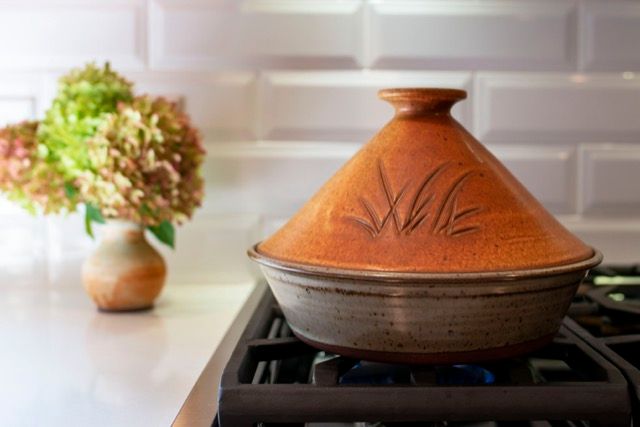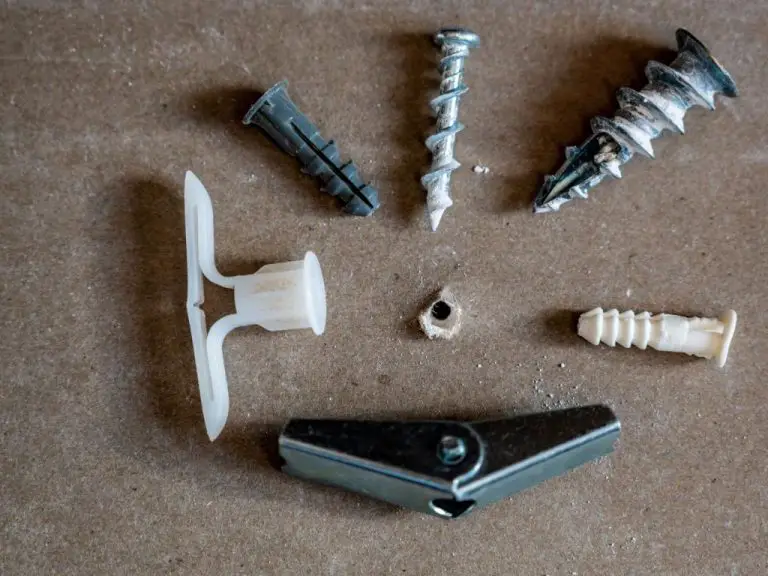How Do They Make Edible Clay?
What is edible clay?
Edible clay, also known as geophagy, is clay that has been specifically prepared for human consumption. Various types of clay have a long history of ingestion by humans across the world. Consuming clay has cultural significance in many regions and has been practiced as a supplement in traditional medicine and dietary intake.
The deliberate intake of clay for health or cultural reasons dates back to ancient history. There is evidence that hunter-gatherer societies all over the world, including Native Americans and aboriginal peoples of Australia, purposefully consumed different clays. This practice continues today in many cultures in Asia, Africa, and South America.
The types of clays used for eating vary by region. Some common edible clays include kaolin, bentonite, and attapulgite which are specially formulated to meet safety and purity standards. Edible clay can be found in health food stores and specialty markets, though some cultures still gather and prepare local clays by hand.
Edible Clay Ingredients
The main ingredients in edible clay are simple pantry staples. The base of the clay is usually made from:
- Cornstarch – This provides the smooth, silky texture.
- All-purpose flour – This helps bind the ingredients together.
- Salt – Just a pinch of salt enhances the flavor.
Optional ingredients can customize the clay:
- Food coloring – Add a few drops to tint the clay any color.
- Extracts – Almond, vanilla, lemon, or mint extracts infuse appealing scents.
Some recipes also include cream of tartar for elasticity, or oil for added smoothness. Overall the ingredients are simple, safe, and probably already in your kitchen.
Making basic edible clay
Making edible clay from scratch is easy and only requires a few simple kitchen ingredients. Here is a step-by-step process for making basic edible clay:
First, measure out the dry ingredients. The most common recipe calls for 2 cups of cornstarch, 1 cup of baking soda, and 1 cup of salt. Mix the dry ingredients together thoroughly in a large bowl.
Next, add liquid. For edible clay, this means cold water. Start by adding 1/2 cup of water and mixing it into the dry ingredients. Continue adding water a few tablespoons at a time until a doughy consistency forms that is not overly sticky. Typically 1 to 1 1/4 cups of water total is needed.
Once the dough forms, knead it with your hands for a couple minutes until smooth and well blended. At this point, the edible clay is ready to use. However, letting it rest for 10-15 minutes allows the ingredients to fully absorb the water and results in a firmer, smoother clay.
And that’s it – with just 3 ingredients and a few easy steps, you can make edible clay for fun crafting activities with kids. Shape the clay into sculptures, animals, or whatever you imagine. Let air dry completely before painting with food coloring.
Food Coloring and Scents
Adding color and scent to your edible clay can make it much more fun and appetizing. There are several options for safely adding color and aroma.
Common food colorings used in edible clay include liquid food colors, gel food colors, powdered drink mix, and natural coloring agents like turmeric, beet powder, spinach powder, etc. Liquid and gel food colors provide the most vibrant hues. Start with just a drop or two and mix thoroughly to evenly distribute the color. Powdered drink mixes like unsweetened Kool-Aid add both flavor and color.
For scent, some of the most popular essential oils to use are lemon, orange, peppermint, vanilla, almond, and coconut. Use only a couple drops of food-grade essential oils per batch and mix well. Lavender and rose oils also provide a nice aroma. Other natural options are vanilla or almond extracts.
Try to use natural food coloring as much as possible when making edible clay. Produce-derived colors like beet, turmeric, blueberry, carrot, and spinach powder provide both nutrition and festive colors. Spices like cinnamon, nutmeg, ginger, and paprika also naturally color the clay.
Different clay shapes
Once you have your basic edible clay mixture made, you can shape it and form it into all kinds of fun creations. Here are some ideas for making different shapes with your edible clay:
Rolling and cutting shapes – Roll the clay out flat using a rolling pin, approximately 1/4 inch thick. Use cookie cutters or a knife to cut out fun shapes like stars, hearts, circles, squares, etc. Remove the excess clay and bake or let air dry.
Using cookie cutters and molds – Cookie cutters, silicone molds, and candy molds are great for shaping clay. Press the clay into the mold to make detailed shapes like animals, flowers, cars, letters, numbers, etc. Carefully remove from the mold before baking or air drying.
Edible Clay Modeling
One of the best parts of edible clay is being able to shape and mold it into different creations. Here are some tips for modeling with your edible clay:
Clay Sculpting Tips and Techniques
Start by kneading the clay thoroughly until it becomes smooth and pliable. This makes it easier to work with. Keep a cup of water nearby to dip your fingers into if the clay starts sticking to your hands.
Use basic sculpting tools like popsicle sticks, toothpicks, plastic knives, cookie cutters, rolling pins, etc. Dip the tools in water to help slide them through the clay smoothly.
Work on a clean, dry surface like wax paper or a plastic mat. Avoid porous surfaces that can absorb moisture from the clay.
Add details and texture by pressing objects lightly into the clay, such as a fork, bubble wrap, cookie cutters, etc.
Let gravity help shape the clay. Allow dangling pieces to extend and curve naturally.
Blend colors together by twisting or rolling different colored pieces of clay together.
Making Simple Figures vs Detailed Sculptures
For simple shapes and figures, use basic balls, coils, and slabs of clay. Pinch and pull the clay into the desired form. Press gently to attach pieces together.
For more detailed sculptures, build around a solid base structure made from thick coils of clay. Add progressively thinner coils on top to sculpt the shape. Allow time for each layer to firm up before adding the next.
Work symmetrically and start with the basic overall shape before adding finer details. Let the clay firm up partially before sculpting intricate details to prevent overly thin or fragile pieces.
Simple figures are great for younger kids while older kids and adults may enjoy sculpting more elaborate clay creations. Either way, the modeling process can be very rewarding and relaxing!
Baking Edible Clay
Once you have finished sculpting your edible clay creation, it’s time to bake it to harden and preserve the sculpture. Baking allows the ingredients to set and bind together into a firm, durable material.
The exact baking temperature and time will vary based on the clay recipe, but generally edible clay should be baked between 250-300°F for 10-20 minutes. Start by baking for 10 minutes, then check the clay. It should be dried out but not browned. Bake longer if needed.
Clay thickness will impact baking time. Thinner pieces may only need 10 minutes, while thicker sculpted pieces may require closer to 20 minutes to fully harden. Watch carefully near the end to avoid over-baking.
As an alternative to baking, you can also air dry edible clay sculptures. This takes longer (24-48 hours) but avoids using the oven. The clay will harden at room temperature as it dries out. Air drying can work well for smaller pieces and simple shapes.
Safety and Storage
When making and using edible clay, it’s important to keep in mind food allergies, proper storage, and food safety handling.
Always check the ingredient list for potential allergens like wheat, dairy, or soy. Do not serve edible clay to anyone with a food allergy or sensitivity without first checking the ingredients thoroughly. Make accommodations by swapping allergenic ingredients for safer alternatives.
For storage, keep edible clay in an airtight container in the refrigerator for up to one week. The cool environment helps prevent bacterial growth. Allow clay to come to room temperature before serving for the best texture. Throw away any clay that smells odd or develops mold.
Follow standard food safety practices when handling edible clay. Wash hands before sculpting. Avoid cross-contaminating clay with unsafe foods. Do not allow anyone with contagious illnesses or infections to handle the clay. Discard any clay that falls on the floor or comes in contact with pets.
By paying attention to any food allergies, proper refrigeration, and food safety, edible clay can be a fun, creative, and safe activity for kids and adults alike.
Edible Clay Activities
Edible clay is a fun and creative material that can be used for various activities and crafts. Here are some ideas for using edible clay in the classroom or at home:
Classroom and Kids Activities
Teachers can use edible clay for various educational activities with students:
- Let students create shapes, letters, numbers, or objects out of edible clay as an art project.
- Use different colored clays to teach students about primary colors and mixing colors.
- Have students measure and weigh balls of clay as a math lesson.
- Create maps and landscapes out of clay as a geography activity.
- Make historical or science artifacts and models with edible clay.
- Let children create their own unique clay creatures and characters.
Edible clay is an engaging sensory material for young kids. Supervise them as they smoosh, pound, roll, and shape the clay. It’s perfect for practicing fine motor skills.
Adult Craft Ideas
For adults, edible clay can be used to make charming crafts:
- Sculpt clay flowers, animals, bowls, and figures.
- Use clay to make cake, cupcake, and cookie toppers.
- Create decorative clay garlands or beads for necklaces.
- Press clay into molds to make refrigerator magnets.
- Make clay succulent plants in pots.
- Use clay to create custom stamps for greeting cards or scrapbooking.
Edible clay crafts make great handmade gifts for any occasion. Get creative with colors, textures, and designs!
Edible clay vs play dough
Edible clay and play dough are often used for similar purposes, but there are some key differences between the two. Here’s an overview of how edible clay compares to play dough:
Differences in ingredients
The main ingredients in edible clay are flour, salt, cream of tartar, vegetable oil, and water. It may also contain food coloring. Play dough, on the other hand, contains flour, salt, water, cream of tartar, and vegetable oil, but also includes preservatives like tartrazine and trisodium phosphate. These allow play dough to be stored longer but make it not meant for eating.
Differences in texture
Edible clay has a smoother, silkier texture compared to play dough. Play dough’s texture is a bit coarser and more grainy. The texture of edible clay makes it easier to mold into more delicate or detailed shapes.
When to use each
Since edible clay is safe to eat, it’s ideal for baking projects, cake decorating, and any modeling where you may want to consume the finished product. Play dough’s texture can make it better for certain projects like making imprints or rolling coils. Play dough also lasts much longer if you want to keep creations over days or weeks. So both have their advantages, but edible clay is best when you want an edible end result.




